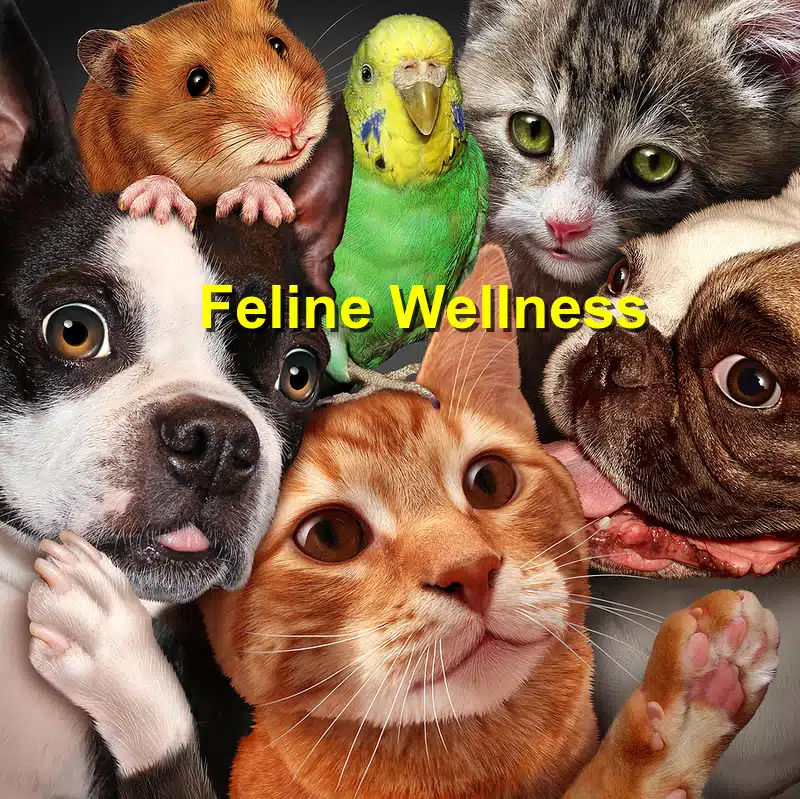Cats are independent creatures, but they still rely on us for their overall well-being. Ensuring your cat stays happy and healthy requires attention to their physical and emotional needs. From providing proper nutrition to maintaining their mental stimulation, here are some key tips to promote your feline friend’s wellness.
1. Provide a Balanced Diet
A nutritious diet is the foundation of a healthy cat. Cats are obligate carnivores, which means they require a diet high in animal-based protein to thrive.
- Feed High-Quality Cat Food: Choose a high-quality commercial cat food that lists real meat as the first ingredient. Avoid foods with excessive fillers like corn and soy.
- Hydration is Key: Cats often don’t drink enough water, so it’s important to ensure they stay hydrated. Incorporate wet food into their diet or provide a water fountain, as cats tend to prefer running water.
- Monitor Portion Sizes: Obesity is a common issue in cats, so be mindful of portion sizes and avoid overfeeding. Consult with your vet to determine the right amount of food for your cat’s age, weight, and activity level.
2. Encourage Regular Exercise
Physical activity is crucial for maintaining your cat’s health, especially for indoor cats. Exercise helps prevent obesity, keeps muscles strong, and provides mental stimulation.
- Play Daily: Spend time playing with your cat every day. Use toys that encourage natural hunting behaviors, such as feather wands or laser pointers.
- Create an Enriched Environment: Cats love to explore and climb. Consider adding cat trees, shelves, or perches to your home to encourage physical activity. Puzzle feeders or treat-dispensing toys can also provide both physical and mental exercise.
- Interactive Play: Engage your cat in interactive play sessions, mimicking the chase-and-catch behavior they would exhibit in the wild. This helps burn energy and satisfies their predatory instincts.
3. Regular Grooming and Hygiene
Keeping your cat well-groomed not only helps them look their best but also promotes overall wellness. Cats groom themselves, but they still need assistance with certain aspects of hygiene.
- Brush Their Coat: Regular brushing helps reduce shedding, prevents matting, and minimizes hairballs. Long-haired cats may need more frequent grooming than short-haired breeds.
- Check Their Ears, Eyes, and Teeth: Regularly inspect your cat’s ears for wax buildup or signs of infection. Keep their eyes clear of discharge, and pay attention to their dental health. Dental disease is common in cats, so regular teeth brushing or dental treats can help prevent issues.
- Trim Their Nails: Overgrown nails can become uncomfortable and even lead to injury. Regularly trimming your cat’s claws will keep them healthy and prevent damage to your furniture.
4. Routine Veterinary Care
Regular vet visits are essential for preventing illness and detecting health problems early. Cats are experts at hiding discomfort, so even if your cat seems healthy, routine checkups are important.
- Annual Exams: Schedule annual veterinary exams to assess your cat’s overall health. Your vet can check for signs of illness, dental disease, and provide vaccinations.
- Parasite Prevention: Use flea, tick, and worm prevention products year-round, especially if your cat goes outdoors. Consult your vet for recommendations on the best products for your cat.
- Spay or Neuter Your Cat: Spaying or neutering not only helps control the pet population but also prevents certain cancers and behavioral issues, such as spraying or roaming.
5. Mental Stimulation and Enrichment
Cats need mental stimulation to stay happy and engaged. A bored cat can develop behavioral issues, such as scratching or overeating.
- Provide Toys and Puzzles: Rotate your cat’s toys regularly to keep things fresh. Interactive toys, puzzle feeders, and DIY games can challenge your cat mentally and keep them entertained.
- Create Safe Outdoor Access: If possible, provide your cat with safe outdoor experiences, such as a catio or supervised leash walks. This allows them to explore new sights and smells while staying safe from hazards.
- Social Interaction: While cats are often more independent than dogs, they still need attention and affection. Spend quality time with your cat through petting, play, or simply relaxing together.
6. Monitor Their Health
It’s important to stay vigilant about changes in your cat’s behavior or health, as cats are experts at hiding signs of illness. Keep an eye out for any sudden changes, including:
- Changes in Appetite or Weight: A sudden decrease or increase in appetite, or unexplained weight loss or gain, could be a sign of a health issue.
- Litter Box Habits: Any changes in your cat’s litter box behavior, such as frequent urination, straining, or avoiding the box, should be addressed by a vet.
- Behavioral Changes: If your cat becomes more withdrawn, aggressive, or starts hiding, it may indicate stress or illness. Monitor these changes and consult your vet if they persist.
Conclusion
Taking care of your cat’s physical and emotional needs is the key to ensuring their long-term health and happiness. By providing a balanced diet, regular exercise, mental stimulation, grooming, and routine vet care, you can help your feline companion lead a healthy and fulfilling life. Paying attention to their behavior and keeping up with preventative care will ensure your cat thrives in every stage of life.
References: TrekVetEmergency, JosephMDocc




